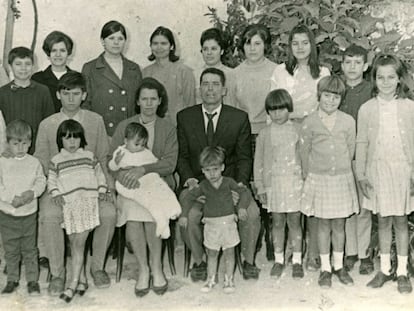Population shrinks, as Spaniards move abroad and foreigners leave
Four-year downward trend continues, according to latest figures from National Statistics Institute

Spain keeps losing population, and there are two major reasons for it: increasing numbers of Spaniards are moving abroad, and there are fewer foreign residents in the country.
On January 1, 2016 there were 99,439 fewer residents in Spain than a year earlier, according to preliminary figures released on Thursday by the National Statistics Institute (INE).
The registered resident population of Spain is currently 46.5 million, a 0.2% decrease in the annual rate.
Births and deaths
Last year, for the first time since the 1930s, Spain recorded more deaths than births in the first half of the year, according to preliminary INE figures. This trend is expected to continue, and will play an increasingly large role in dwindling population figures.
The figures are based on local resident registration, known as the municipal padrón. Councils regularly send in updated figures to the INE for statistical purposes.
The latest numbers confirm a downward trend that began in 2012, with the economic crisis in full swing.
Foreigners, who represent 9.9% of the registered population, fell by 128,372 individuals. Of these, the main nationalities were Ecuador, Britain and Germany. The INE notes that in 2015, around 123,000 foreign nationals were granted Spanish citizenship.
To this downward flow must be added the Spaniards who are moving away in search of better job opportunities. Since 2009, there has been a 56.6% rise in the number of Spanish citizens living abroad, according to INE data released in March.
Sign up for our newsletter
EL PAÍS English Edition is launching a weekly newsletter. Sign up today to receive a selection of our best stories in your inbox every Saturday morning. For full details about how to subscribe, click here.
There are 4.6 million registered foreigners living in Spain, of whom nearly 1.8 million are European Union citizens. The largest communities are Romanian, British and Italian. Moroccans make up the largest non-EU group in Spain, followed by the Chinese and the Ecuadorians.
Statistics show that the most heavily populated regions of Spain are Andalusia, Catalonia, Madrid and the Valencia region. At the other end of the spectrum, La Rioja, Cantabria and Navarre continue to be the most sparsely populated areas in the country.
There were population declines across all regions over the course of last year, except for Madrid, the Balearic Islands and Catalonia, as well as the exclave cities of Ceuta and Melilla.
English version by Susana Urra.
Tu suscripción se está usando en otro dispositivo
¿Quieres añadir otro usuario a tu suscripción?
Si continúas leyendo en este dispositivo, no se podrá leer en el otro.
FlechaTu suscripción se está usando en otro dispositivo y solo puedes acceder a EL PAÍS desde un dispositivo a la vez.
Si quieres compartir tu cuenta, cambia tu suscripción a la modalidad Premium, así podrás añadir otro usuario. Cada uno accederá con su propia cuenta de email, lo que os permitirá personalizar vuestra experiencia en EL PAÍS.
¿Tienes una suscripción de empresa? Accede aquí para contratar más cuentas.
En el caso de no saber quién está usando tu cuenta, te recomendamos cambiar tu contraseña aquí.
Si decides continuar compartiendo tu cuenta, este mensaje se mostrará en tu dispositivo y en el de la otra persona que está usando tu cuenta de forma indefinida, afectando a tu experiencia de lectura. Puedes consultar aquí los términos y condiciones de la suscripción digital.
More information
Últimas noticias
The complicated life of Francesca Albanese: A rising figure in Italy but barred from every bank by Trump’s sanctions
How Japan is trying to avert ‘digital defeat’
Reinhard Genzel, Nobel laureate in physics: ‘One-minute videos will never give you the truth’
Pinochet’s victims grapple with José Antonio Kast’s rise in Chile
Most viewed
- Pablo Escobar’s hippos: A serious environmental problem, 40 years on
- Why we lost the habit of sleeping in two segments and how that changed our sense of time
- Trump’s obsession with putting his name on everything is unprecedented in the United States
- The Florida Keys tourist paradise is besieged by immigration agents: ‘We’ve never seen anything like this’
- Charles Dubouloz, mountaineering star, retires at 36 with a farewell tour inspired by Walter Bonatti










































